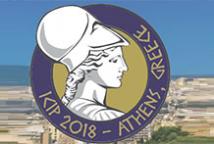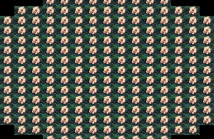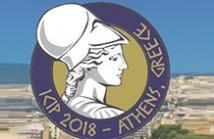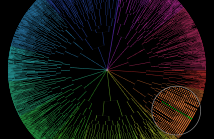
The International Conference on Image Processing (ICIP), sponsored by the IEEE Signal Processing Society, is the premier forum for the presentation of technological advances and research results in the fields of theoretical, experimental, and applied image and video processing. ICIP has been held annually since 1994, brings together leading engineers and scientists in image and video processing from around the world. Visit website.


- Read more about A RETINA-INSPIRED ENCODER: AN INNOVATIVE STEP ON IMAGE CODING USING LEAKY INTEGRATE-AND-FIRE NEURONS
- Log in to post comments
ICIP_2018.pdf
- Categories:
 38 Views
38 Views
- Read more about Learning Semantics-Guided Visual Attention for Few-shot Image Classification
- Log in to post comments
We propose a deep learning framework for few-shot image classification, which exploits information across label semantics and image domains, so that regions of interest can be properly attended for improved classification. The proposed semantics-guided attention module is able to focus on most relevant regions in an image, while the attended image samples allow data augmentation and alleviate possible overfitting during FSL training. Promising performances are presented in our experiments, in which we consider both closed and open-world settings.
- Categories:
 77 Views
77 Views
In recent years, light fields have become a major research topic and their applications span across the entire spectrum of classical image processing. Among the different methods used to capture a light field are the lenslet cameras, such as those developed by Lytro. While these cameras give a lot of freedom to the user, they also create light field views that suffer from a number of artefacts. As a result, it is common to ignore a significant subset of these views when doing high-level light field processing.
- Categories:
 77 Views
77 Views
- Read more about R-COVNET: RECURRENT NEURAL CONVOLUTION NETWORK FOR 3D OBJECT RECOGNITION
- Log in to post comments
Point cloud are precise digital record of an objects in space. It starts to getting more attention due to the additional information it provides compared to 2D images. In this paper, we propose a new deep learning architecture called R-CovNets, designed for 3D object recognition. Unlike to previous approaches that usually sample or convert point cloud into three-dimensional grids, R-CovNets does not reckon on any preprocessing. Our architecture is specially designed for cloud point, permutation invariant and can take as input, a data of any size.
R-COVNET.pdf
- Categories:
 44 Views
44 Views
- Read more about Deep-learning-based pipe leak detection using image-based leak features
- Log in to post comments
- Categories:
 131 Views
131 Views
- Read more about Sequential Knowledge Transfer in Teacher-Student Framework using Densely Distilled Flow-Base Information
- Log in to post comments
- Categories:
 13 Views
13 Views
- Read more about BACTERIAL IMAGE ANALYSIS AND SINGLE-CELL ANALYTICS TO DECIPHER THE BEHAVIOR OF LARGE MICROBIAL COMMUNITIES
- Log in to post comments
Time-lapse microscopy provides 4D imaging data for monitoring and studying down to single-cell, the stochastic processes involved as bacterial colonies grow and interact under different stress conditions. Two main factors prevent high throughput analysis: a) cell segmentation and tracking are very time-consuming and error-prone and b) analytics tools are lacking to interpret the plethora of features extracted from a complex “cell-movie.” To address both limitations, we have recently developed a multi-resolution Bio-image Analysis & Single-Cell Analytics framework, called BaSCA.
- Categories:
 24 Views
24 Views
- Read more about Experiences in using the Pepper Robotic Platform for Museum Assistance Applicatons
- Log in to post comments
This paper presents the software architecture of a robotic museum guide application called CUMA.
It is intended to run upon the Pepper robotic platform and has the objective of guiding visitors of a museum accompanying them in the tour, explaining museum works, and interacting with them in order to gather feedback.
- Categories:
 24 Views
24 Views
- Read more about Increasingly specialized ensemble of Convolutional Neural Networks for Fine-grained recognition
- Log in to post comments
Fine-grained recognition focuses on the challenging task of automatically identifying the subtle differences between similar categories. Current state-of-the-art approaches require elaborated feature learning procedures, involving tuning several hyper-parameters, or rely on expensive human annotations such as objects or parts location. In this paper we propose a simple method for fine-grained recognition that exploits a nearly cost-free attention-based focus operation to construct an ensemble of increasingly specialized Convolutional Neural Networks.
simonelli.pdf
- Categories:
 28 Views
28 Views